Comet Tempel 1 – Learn About The Comet NASA Smashed Into
High-Speed Hit And Run
Comet Tempel 1 is classified as a short period Jupiter-family comet with a current orbital period of 5.5 years that was first discovered in 1867. Tempel 1 is famous for being the comet that NASA’s Deep Impact deliberately hit with a high-speed impactor in 2005 creating a dramatic burst of dust and gases.
Fast Fun Summary Facts!
- Discovered By: Wilhelm Tempel on 3 April 1867
- Name: Comet 9P/Tempel 1
- Maximum Apparent Magnitude: 11
- Nucleus Size: 6 km (3.73 miles)
- Aphelion: 4.75 AU
- Perihelion: 1.54 AU
- Eccentricity: 0.5096
- Inclination: 10.47°
- Orbital Period: 5.56 years
More Interesting Facts About The Tempel 1 Comet!
- The comet was initially discovered on April 3rd 1867 by Wilhelm Tempel and was determined to be in orbit within the main Asteroid belt and is therefore classified as a periodic Jupiter-family comet; these are comets that have relatively short orbital periods of less than 20 years.
- The faint comet was lost for many years as astronomers did not realize that its interactions with the Planet Jupiter were altering its orbit! Comets like Temple 1 orbiting in the main Asteroid belt near Jupiter tend to have unstable orbits that evolve over time due to perturbations and their outgassing.
- If you want to view Tempel 1 yourself, you’re going to need a decent telescope as it’s quite faint with an apparent magnitude of only 11, much fainter than can be seen with the naked eye.
- Comet Tempel 1 is most famous for being the target of the 370 kg impactor probe deployed from the NASA Deep Impact mission in July 2005 when the comet was near perihelion. The successful impact at 10.2 km/s (which struck with the equivalent kinetic energy of 4.8 tonnes of TNT) meant that Deep Impact became the first spacecraft to impact and excavate material from the surface of a comet.
- The dramatic bright spray of material from the impact was imaged and studied by the main Deep Impact probe, as well as Earth-based and space-based telescopes, to determine the chemical composition of Tempel 1.
- The comet was found to contain a variety of compounds in addition to silicates (which you’d expect of a rocky surface) and water-ice which was ejected from 1 metre below the crust of the surface.
- A follow-up NASA mission called the NExT mission utilizing the existing Stardust spacecraft made a flyby of Tempel 1 in 2011 to image the 150 m (490 ft) crater that Deep Impact had created.
- Interestingly, Tempel 1 will make a close flyby within 0.02 AU of Mars on October 17, 2183. Maybe Human’s will have a base on Mars’ by then to witness that!
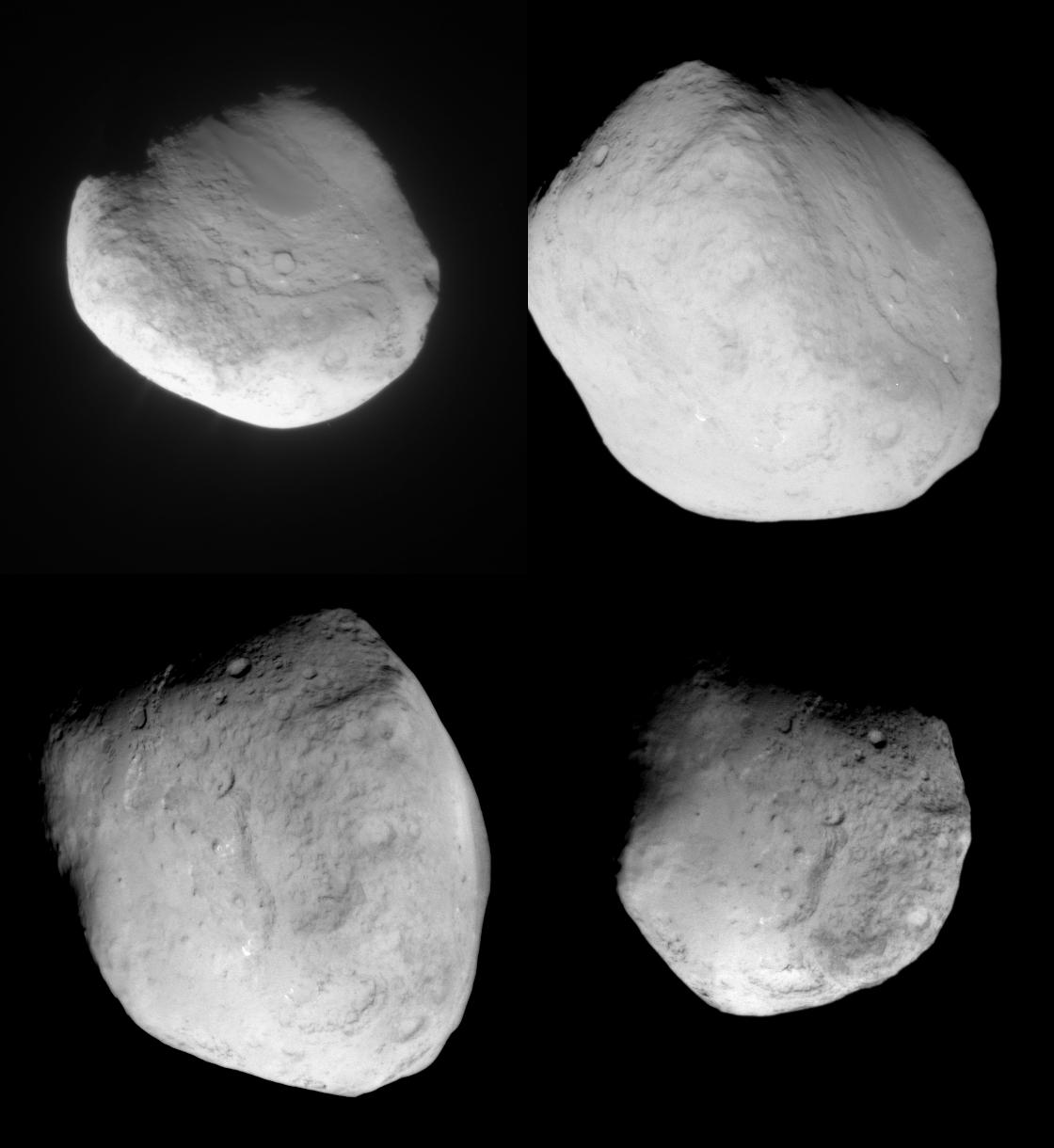
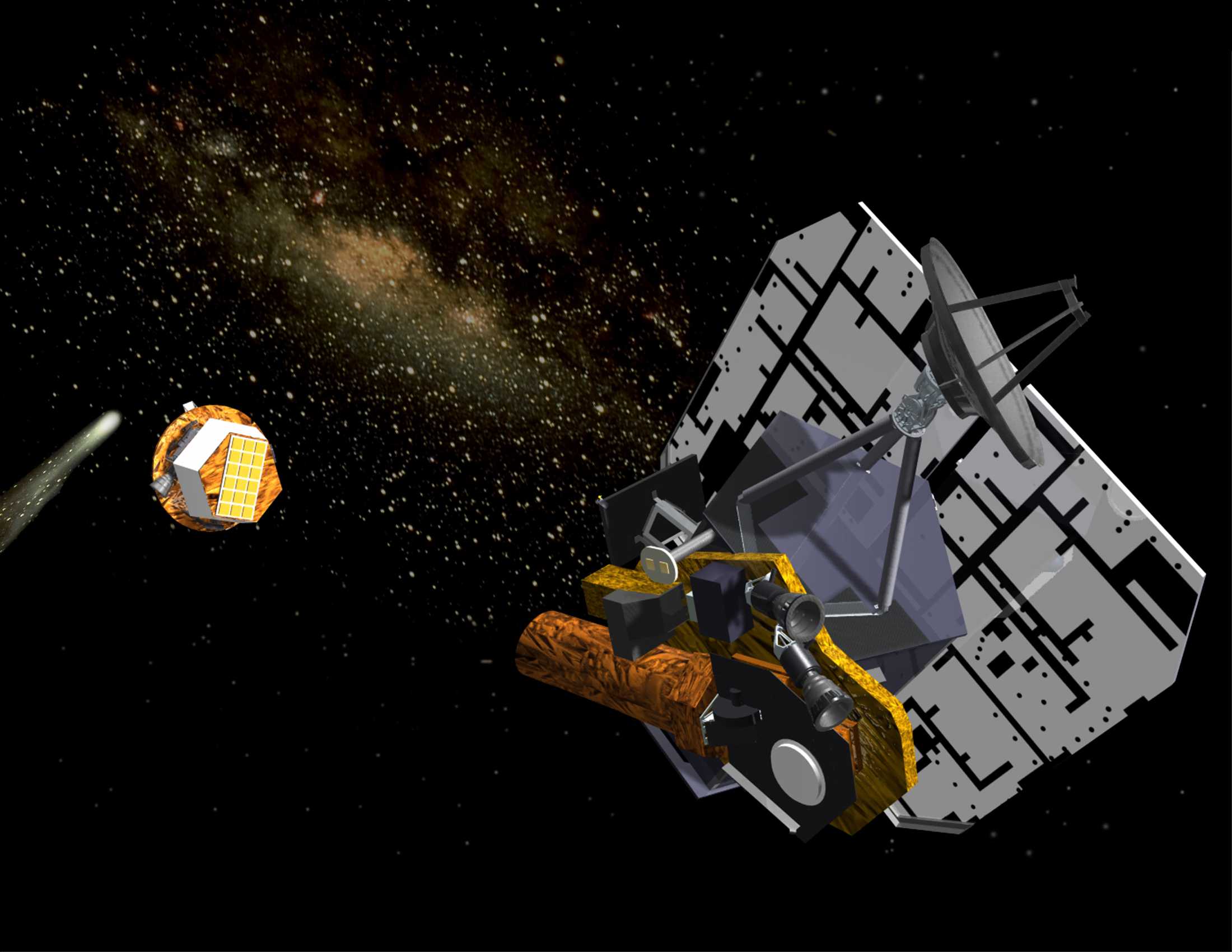
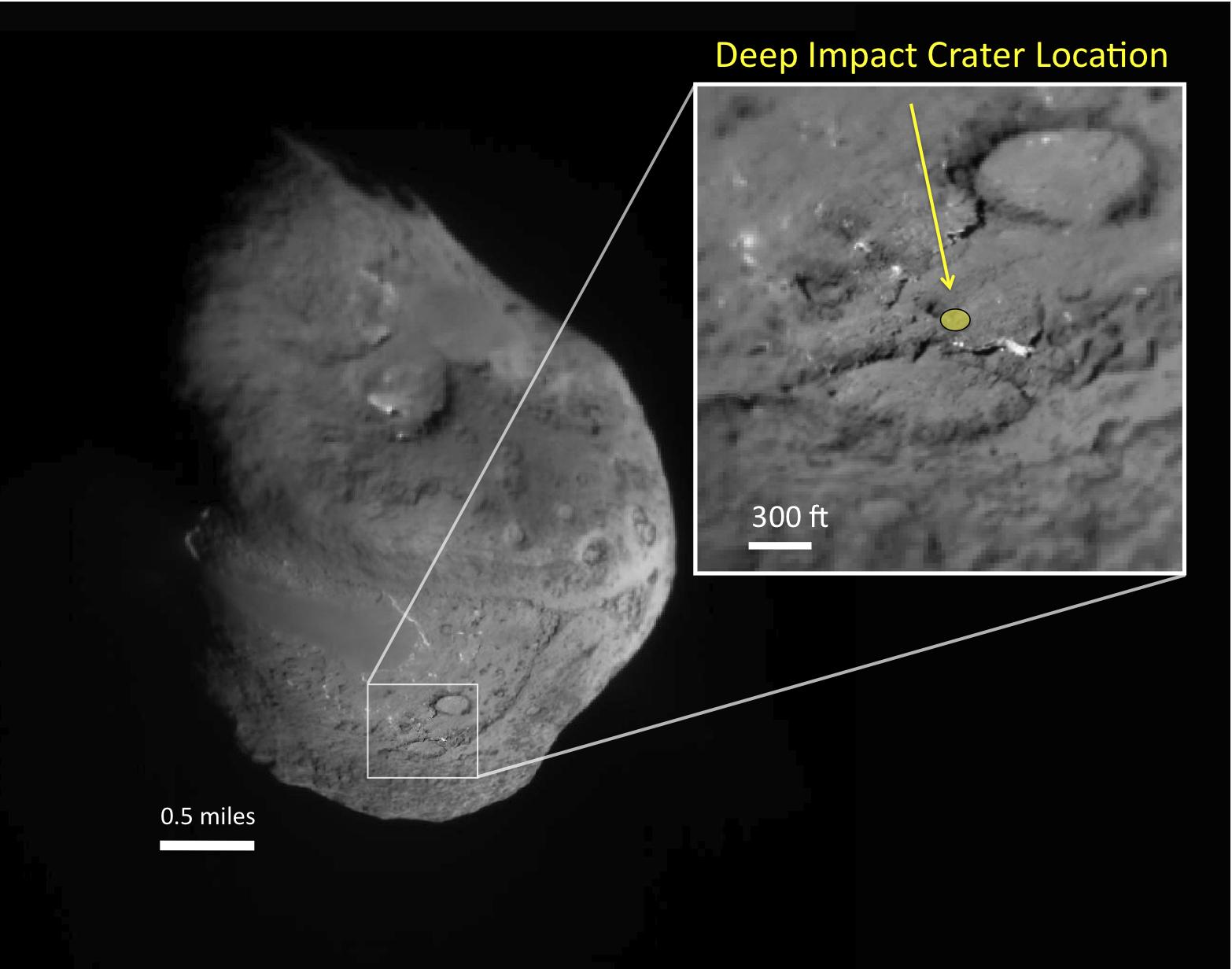
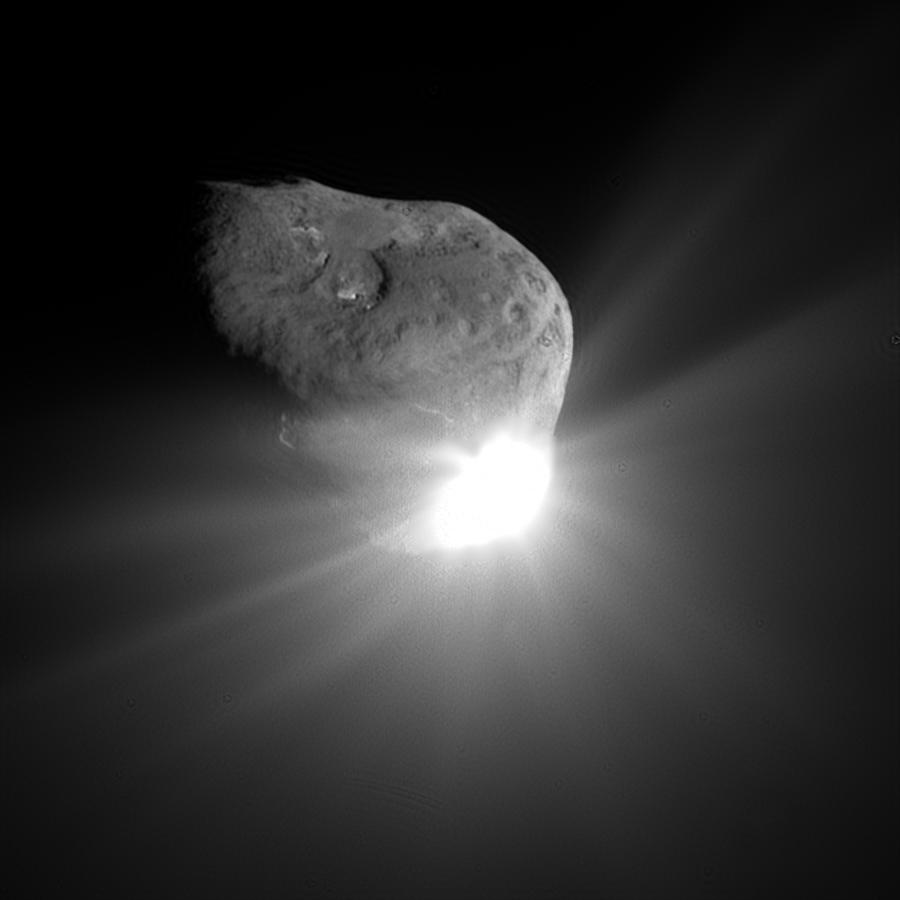
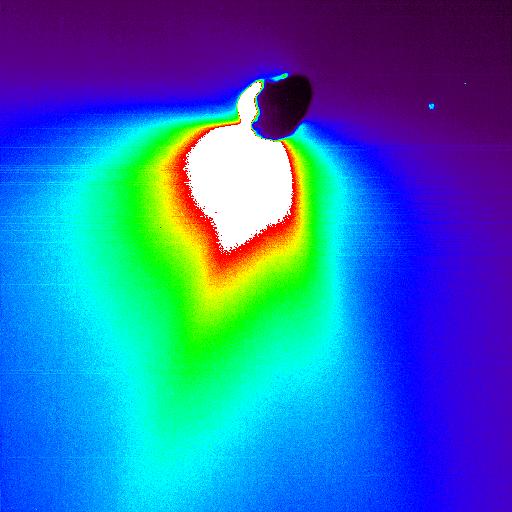
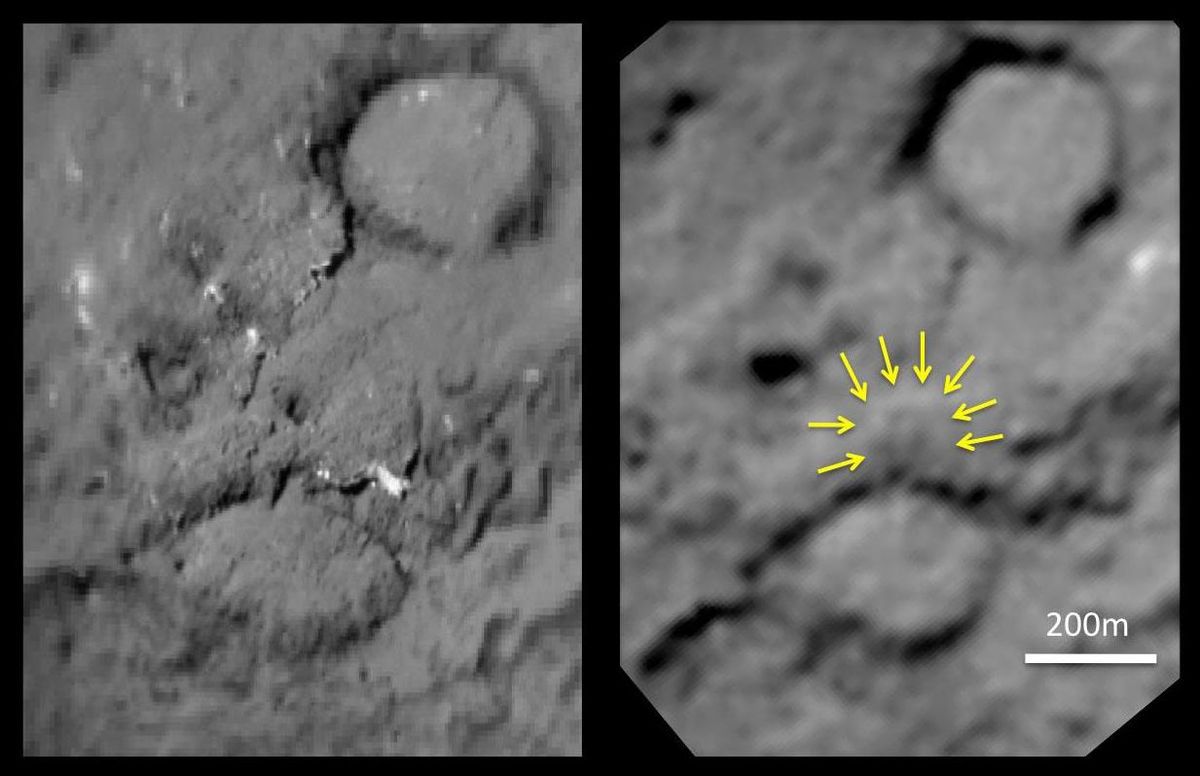
Comet Tempel 1
NASA's Deep Impact Spacecraft
Deep Impact
Shooting Comets
Comet Collision
Deep Impact Tempel Crater




